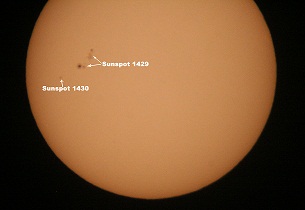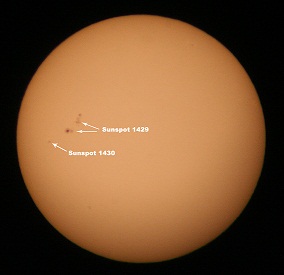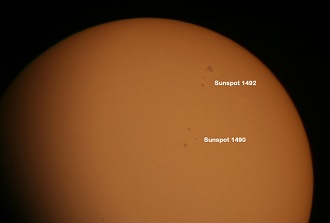|
The Sun
The sun lies at the heart of the
solar system, where it is by far
the largest object. It holds 99.8
percent of the solar system's mass and is
roughly 109 times the diameter of the Earth
— about
one million Earths could fit inside the sun.
The visible part of the sun is roughly 10,000 degrees F (5,500 degrees C), while temperatures in the core reach more than 27 million
degrees F (15 million degrees C),
driven by nuclear reactions. One would
need to explode
100 billion tons of dynamite every second
to match the energy produced by the Sun.
The sun is one of
more than 100 billion stars in the Milky Way.
It orbits some 25,000 light years from the galactic core, completing a
revolution once every 250 million years or so. The sun is relatively young, part
of a generation of stars known as Population I, which are relatively rich in
elements heavier than helium. An older generation of stars is called Population
II, and an earlier generation of Population III may have existed, although no
members of this generation are known yet.
The sun was born
roughly 4.6 billion years ago. Many
scientists think the sun and the rest of the solar system formed from a giant,
rotating cloud of gas and dust known as
the solar nebula. As the nebula
collapsed because of its gravity, it spun faster and flattened into a disk. Most
of the material was pulled toward the center to form the sun.
The sun has enough nuclear fuel to stay much as it is now
for another 5 billion years. After that,
it will swell to become a red giant. Eventually, it will shed its outer layers,
and the remaining core will collapse to become a white dwarf. Slowly, this will
fade, to enter its final phase as a dim, cool object sometimes known as a black
dwarf.
Sunspots & Solar Cycle
Sunspots are relatively cool, dark features on the sun's surface that are often
roughly circular. They emerge where dense bundles of magnetic field lines from
the sun's interior break through the surface. The number of sunspots
varies as solar
magnetic activity does — the change in this number, from a minimum of none
to a maximum of roughly 250 sunspots or clusters of sunspots and then back to a
minimum, is known as the solar cycle, and averages about 11 years long. At the
end of a cycle, the magnetic field rapidly reverses its polarity.
Click on images for higher resolution (opens new window).

|
|
Taken on 3/10/2012
Un-modified Canon Rebel XT 350D
AstroView 120ST EQ
Single Exposure 1/4000
Manually
Focused
Processed with PhotoShop CS (only to add the text) |
|
|
|
|

|
|
2nd Take...
Taken on 3/10/2012
Un-modified Canon Rebel XT 350D
AstroView 120ST EQ
Single Exposure 1/4000
Manually
Focused
Processed with PhotoShop CS (only to add the text) |
|
|
|
|

|
|
Taken on 5/27/2012
Un-Modified Canon Rebel XT 350D
AstroView 120ST EQ
Single Exposure 1/80
ISO 100
Manually Focused
Processed with PhotoShop CS (only to add the text) |
|